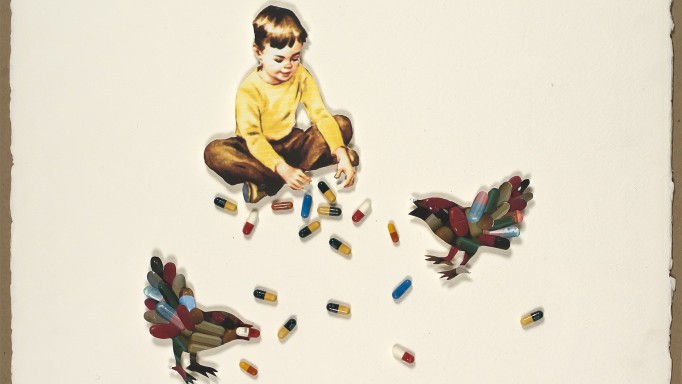Women with HIV can live long, healthy lives with good care and treatment. Finding a doctor that you feel comfortable with, and who you trust enough to share personal information with, is the first step to take if you are at risk for or have been diagnosed with HIV. It’s important to discuss not only HIV prevention or treatment but also your overall sexual health, birth control preferences and pregnancy concerns.
If you don’t know where to go or who to ask for advice on finding a doctor with experience treating women with HIV, then try searching the POZ directory to find a local AIDS service organization. They usually have a list of recommended doctors in your area.
HIV Among Women
Women in the United States have lower HIV rates than gay and bisexual men, but a substantial number are at risk—and that risk varies widely by race/ethnicity and geography.
Making up about half of the U.S. population, women accounted for about 1 in 5 new HIV diagnoses in 2019, or approximately 7,000 cases. HIV incidence among women has declined slightly in recent years. Women make up nearly a quarter of all people living with HIV in the United States, but this rises to about half worldwide.
Black women are disproportionately affected by HIV, accounting for just over half of new diagnoses. White women and Latina women each account for around 20% of new cases. The Centers for Disease Control and Prevention (CDC) projects than about 1 in 300 Black and Latina women will acquire HIV in their lifetime compared with about 1 in 900 white women. This means Black and Latina women are around three times more likely than white women to ever be diagnosed with HIV. But Black women have seen a decline in HIV incidence in recent years, while white women have seen an increase.
Women ages 25 to 34 are most likely to be diagnosed with HIV—a bit older than the average age for men. While women in areas such as the Bronx and Washington, DC, are more likely to be living with HIV, new cases are increasingly shifting to the South. Nearly half of women diagnosed with HIV live in areas with high poverty.
Most cisgender women living with HIV were exposed through heterosexual contact (84%), followed by injection drug use (16%). Transgender women are at greater risk for HIV than cisgender women: While they make up less than 1% of the U.S. population, they account for an estimated 2% of new HIV diagnoses.
HIV Prevention
Daily pills or every-other-month injections, known as pre-exposure prophylaxis (PrEP), are highly effective for preventing HIV.
The once-daily tenofovir disoproxil fumarate/emtricitabine pill (Truvada or generic equivalents) reduces the risk of HIV acquisition via sex by around 99% if used consistently. It is approved for cisgender and transgender women. However, a second PrEP pill, Descovy (tenofovir alafenamide/emtricitabine), is not approved for people exposed to HIV through vaginal sex because they were not adequately represented in clinical trials.
A new long-acting injectable medication, Apretude (cabotegravir), is even more effective than daily oral PrEP, according to a recent study. The injections are administered by a health care provider every eight weeks.
Along with using condoms and not sharing drug injection equipment, PrEP is a highly effective tool for preventing HIV. However, only 7% of women who could benefit from PrEP were receiving it in 2018.
HIV Care and Treatment
The CDC estimates that 90% of women living with HIV have been tested and are aware of their status. HIV testing is important because people who know their status can start antiretroviral treatment, which halts disease progression. What’s more, treatment prevents HIV transmission because people with an undetectable viral load do not transmit the virus through sex.
HIV does not progress faster among women, they respond equally well to antiretroviral therapy and treatment recommendations are generally the same for men and women.
For every 100 women diagnosed with HIV in 2018, according to the CDC, 76 received some HIV care, 58 were retained in care and 63 achieved viral suppression—similar to the rates for the HIV population as a whole.
Women living with HIV are at increased risk for other health conditions, such as cardiovascular disease, liver disease and bone loss. In addition to HIV treatment, it is important to eat a healthy diet, get enough exercise, curb unhealthy habits such as smoking or drinking too much and see your health care providers regularly.
Special Concerns
Many women at risk for or living with HIV face additional challenges, including poverty, lack of health insurance, homelessness, incarceration and criminalization related to their HIV status. Dealing with HIV and related stigma can increase stress and lead to depression.
Women with HIV, especially those who are not on effective treatment, are prone to gynecological problems, such as recurrent vaginal yeast infections (candidiasis), precancerous cell changes caused by human papillomavirus (HPV) and irregular menstruation. HIV-positive women can safely use most forms of contraception, but some could potentially interact with HIV medications. It is important to see an HIV-knowledgeable gynecologist in addition to your primary care provider.
Women who wish to have children have additional concerns. HIV can be passed from mother to baby during pregnancy or delivery, but effective antiretroviral treatment prevents vertical transmission. For HIV-positive women with an HIV-negative male partner, or vice versa, PrEP can enable safe conception without putting the negative partner at risk.
Women are often responsible for caring for others, and they may not prioritize their own needs. But knowing your HIV status, using the best prevention tools if you’re negative and staying on treatment if you’re positive can help maximize your own health and put you in a better position to care for loved ones.
Last Reviewed: May 12, 2023














